When it comes to roofing work, having the right tools can make all the difference between a job well done and a potential disaster. Among the essential tools in a roofer’s arsenal, the shingling hammer stands out as a versatile and indispensable instrument. But why is a shingling hammer ideal for roofing work?
In this comprehensive guide, we’ll explore the unique features and benefits of this specialized tool, and how it contributes to efficient and high-quality roofing projects.
At AdMize Homes, your trusted roofing partner in Islamabad, we understand the importance of using the right tools for the job. Whether you’re a professional roofer or a DIY enthusiast, knowing the ins and outs of a shingling hammer can significantly improve your roofing experience. So, let’s dive in and uncover the secrets of this essential roofing tool!
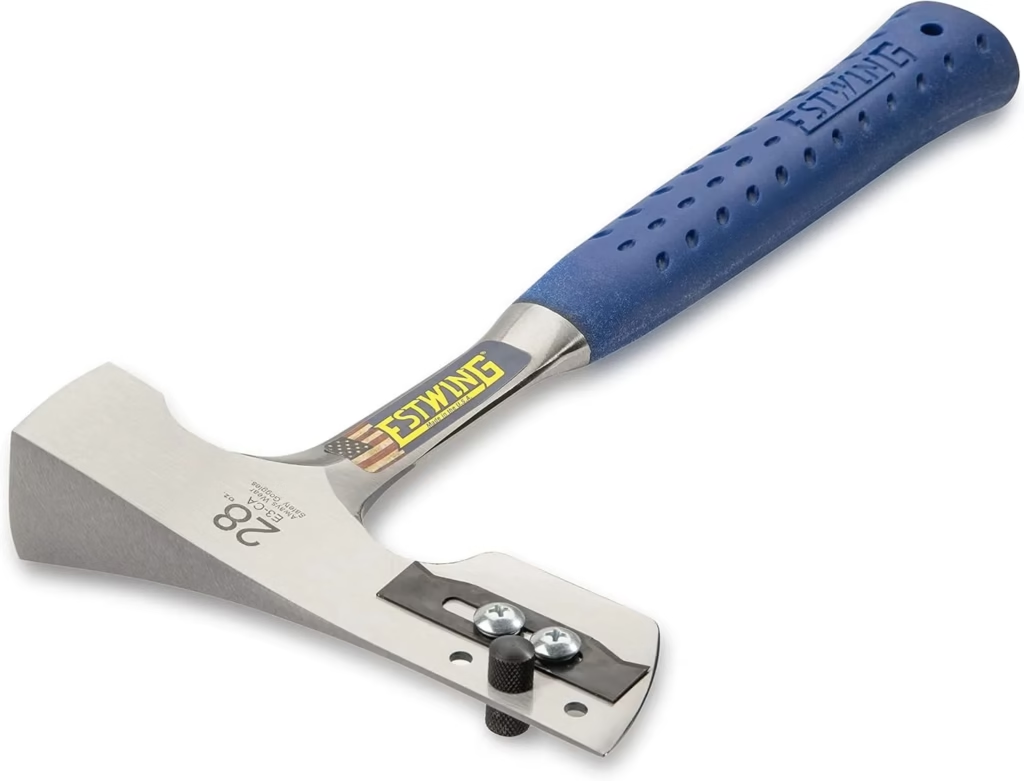
The Best Hammer for Shingle Removal, repair and a New Roof!
Before we delve into why a shingling hammer is ideal for roofing work, it’s crucial to understand what sets this tool apart from regular hammers. A shingling hammer, also known as a roofing hammer or roofing axe, is a specialized tool designed specifically for installing and repairing roof shingles.
Key Features of a Shingling Hammer
- Magnetized Head: Unlike standard hammers, shingling hammers often feature a magnetized head that holds nails in place, allowing for one-handed operation.
- Gauge: A built-in gauge on the head helps measure the correct exposure for shingles, ensuring consistent and professional-looking results.
- Serrated Face: The striking face of a shingling hammer typically has serrations that grip nail heads, reducing slippage during driving.
- Waffle Pattern: Some models feature a waffle pattern on the face, which helps prevent damage to shingles when driving nails.
- Claw: The claw end of a shingling hammer is designed for efficient nail removal and prying up old shingles.
- Axe Blade: Many shingling hammers incorporate an axe blade on the side, useful for cutting shingles and other roofing materials.
- Ergonomic Handle: The handle is often designed for comfort and reduced fatigue during long hours of roofing work.
While this may seem unrelated, the attention to detail in selecting the right tools and accessories for your work is paramount in achieving professional results.
Why is a Shingling Hammer Ideal for Roofing Work?
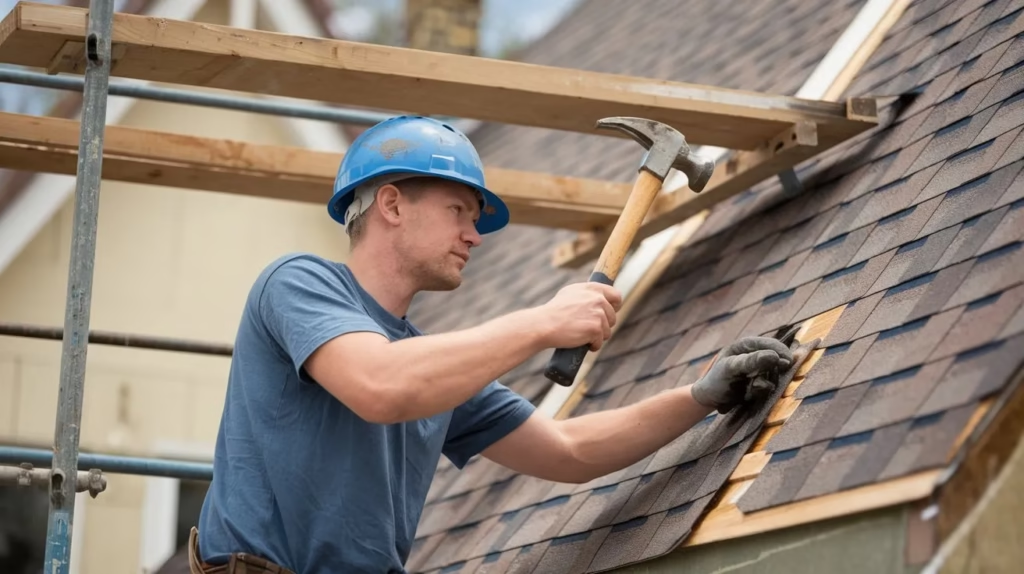
Now that we’ve covered the basics, let’s explore why a shingling hammer is the go-to tool for roofing professionals and DIY enthusiasts alike.
1. Precision and Efficiency
The magnetized head of a shingling hammer allows roofers to hold and place nails with one hand while using the other to position shingles. This feature significantly increases efficiency and precision, especially when working on steep or challenging roof surfaces. In cities like Seattle, known for its rainy weather and complex roofing projects, this precision is invaluable.
2. Consistent Shingle Placement
The built-in gauge on a shingling hammer ensures that each row of shingles is placed at the correct height. This consistency is crucial for both the aesthetic appeal and the functionality of the roof. In upscale neighborhoods of London or Paris, where architectural beauty is paramount, this feature helps maintain the high standards expected in roofing work.
3. Reduced Shingle Damage
The serrated or waffle-patterned face of a shingling hammer provides better grip on nail heads while minimizing damage to shingles. This is particularly important when working with delicate or high-end roofing materials often used in luxury homes in Beverly Hills or the Hamptons.
4. Versatility
The combination of a hammer, nail puller, and cutting blade in one tool makes the shingling hammer incredibly versatile. This all-in-one design reduces the need to switch between multiple tools, saving time and effort. For roofing companies in bustling cities like New York or Tokyo, where time is of the essence, this versatility can significantly improve productivity.
5. Ergonomics and Comfort
Designed for extended use, shingling hammers often feature ergonomic handles that reduce fatigue and strain. This is crucial for roofers who spend long hours on the job, especially in cities with extreme weather conditions like Phoenix or Dubai.
6. Durability
Shingling hammers are built to withstand the rigors of roofing work. Their robust construction ensures they can handle the demands of frequent use in various weather conditions, from the humid climates of Miami to the harsh winters of Toronto.
Types of Shingling Hammers
Just as there are various types of roofs, there are different types of shingling hammers to suit specific needs. Understanding these variations can help you choose the right tool for your roofing projects.
1. Traditional Shingling Hammer
This is the most common type, featuring a magnetized head, gauge, and claw. It’s versatile and suitable for most roofing tasks.
2. Hatchet-Style Shingling Hammer
These hammers have a more pronounced axe blade, making them ideal for cutting shingles and other roofing materials. They’re particularly popular in regions like the Pacific Northwest, where wood shake roofs are common.
3. Milled-Face Shingling Hammer
The face of these hammers has a textured or “milled” surface, providing extra grip on nail heads. This type is preferred in areas with high winds, such as coastal regions of Florida or the Caribbean.
4. Smooth-Face Shingling Hammer
These hammers have a smooth striking surface, which is less likely to leave marks on shingles. They’re often used for high-end roofing projects in affluent areas like Beverly Hills or the Swiss Alps.
5. Pneumatic Shingling Hammer
While not a hand tool, pneumatic shingling hammers are worth mentioning. These air-powered tools are used for large-scale commercial roofing projects, common in rapidly developing cities like Dubai or Shanghai.
How to Choose the Right Shingling Hammer
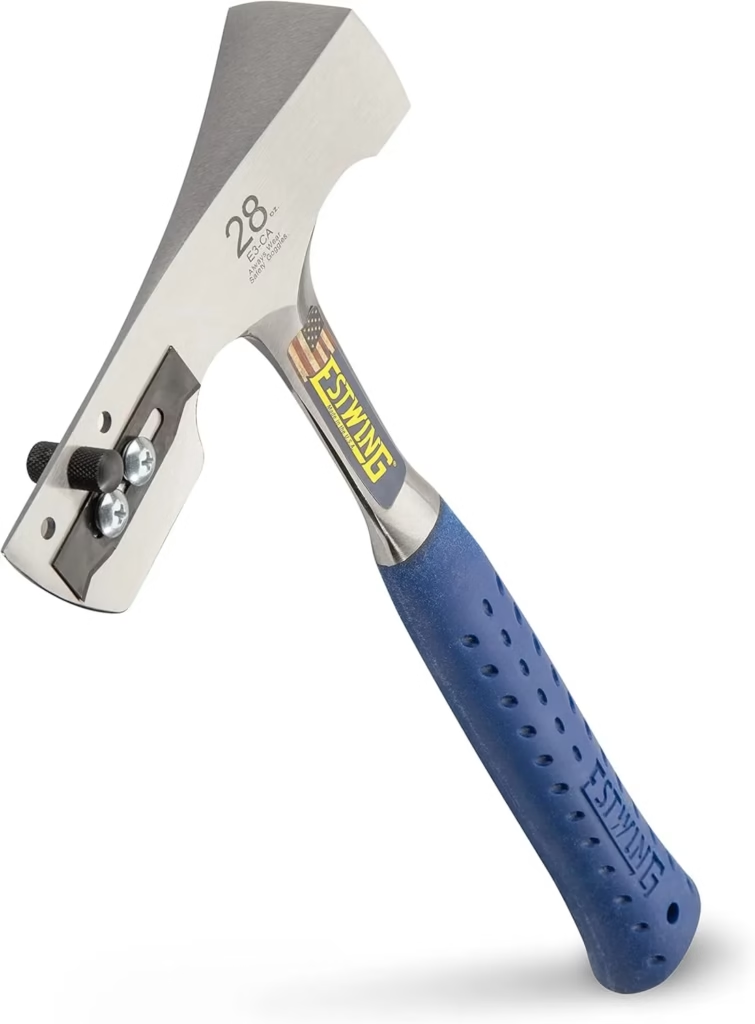
Selecting the appropriate shingling hammer is crucial for efficient and high-quality roofing work. Here are some factors to consider:
- Weight: A hammer that’s too heavy can cause fatigue, while one that’s too light may not drive nails effectively. Find a balance that suits your strength and the type of roofing work you do.
- Handle Material: Options include wood, fiberglass, and steel. Each has its pros and cons in terms of durability, shock absorption, and comfort.
- Head Design: Consider the type of roofing materials you typically work with. A waffle-patterned head might be ideal for asphalt shingles, while a smooth face could be better for slate or tile roofs.
- Magnetic Strength: If you frequently work on steep roofs, a stronger magnet can be beneficial for holding nails securely.
- Gauge Accuracy: Ensure the built-in gauge is accurate and easy to read for consistent shingle placement.
- Brand Reputation: Opt for reputable brands known for producing quality roofing tools. At AdMize Homes, we always recommend tools from trusted manufacturers to ensure reliability and longevity.
Remember, just as you would carefully consider Free Shingle Roof Cost Calculator in 2025, the same level of thoughtfulness should be applied when selecting your roofing tools.
Proper Techniques for Using a Shingling Hammer
Mastering the use of a shingling hammer is essential for efficient and high-quality roofing work. Here are some key techniques to keep in mind:
- Nail Placement: Use the gauge on the hammer to ensure consistent nail placement. This is crucial for proper shingle overlap and water resistance.
- Driving Nails: Strike the nail firmly and squarely to avoid bending. A bent nail can compromise the integrity of the roof and may lead to leaks.
- Using the Claw: When removing nails or prying up old shingles, use the claw end of the hammer. Place a piece of plywood under the claw to distribute the force and prevent damage to the underlying roof structure.
- Cutting Shingles: If your shingling hammer has an axe blade, use it to make clean cuts when trimming shingles to fit around vents, chimneys, or other roof features.
- Avoiding Shingle Damage: Be careful not to strike the shingles directly with the hammer face. This can damage the shingles and reduce their lifespan.
- Ergonomics: Maintain a comfortable grip and stance to reduce fatigue during long roofing sessions. This is particularly important in cities with extreme weather conditions, like the scorching heat of Phoenix or the bitter cold of Moscow.
Mastering these techniques can significantly improve the efficiency and quality of your roofing work, whether you’re working on a modern apartment complex in Berlin or a historic cottage in the English countryside.
Affiliate Disclosure
At Admize Homes, we believe in transparency with our readers. Some links in this article may be affiliate links, meaning we may earn a small commission if you purchase through them—at no extra cost to you. These commissions help support our website and allow us to continue providing high-quality content about home improvement, real estate, and renovation.
We only recommend roofing tools that we believe are valuable, reliable, and useful for homeowners and professionals alike. Our reviews and recommendations are based on thorough research and experience to ensure you get the best products for your roofing projects.
Thank you for supporting Admize Homes!
Shingling Hammer vs. Other Roofing Tools
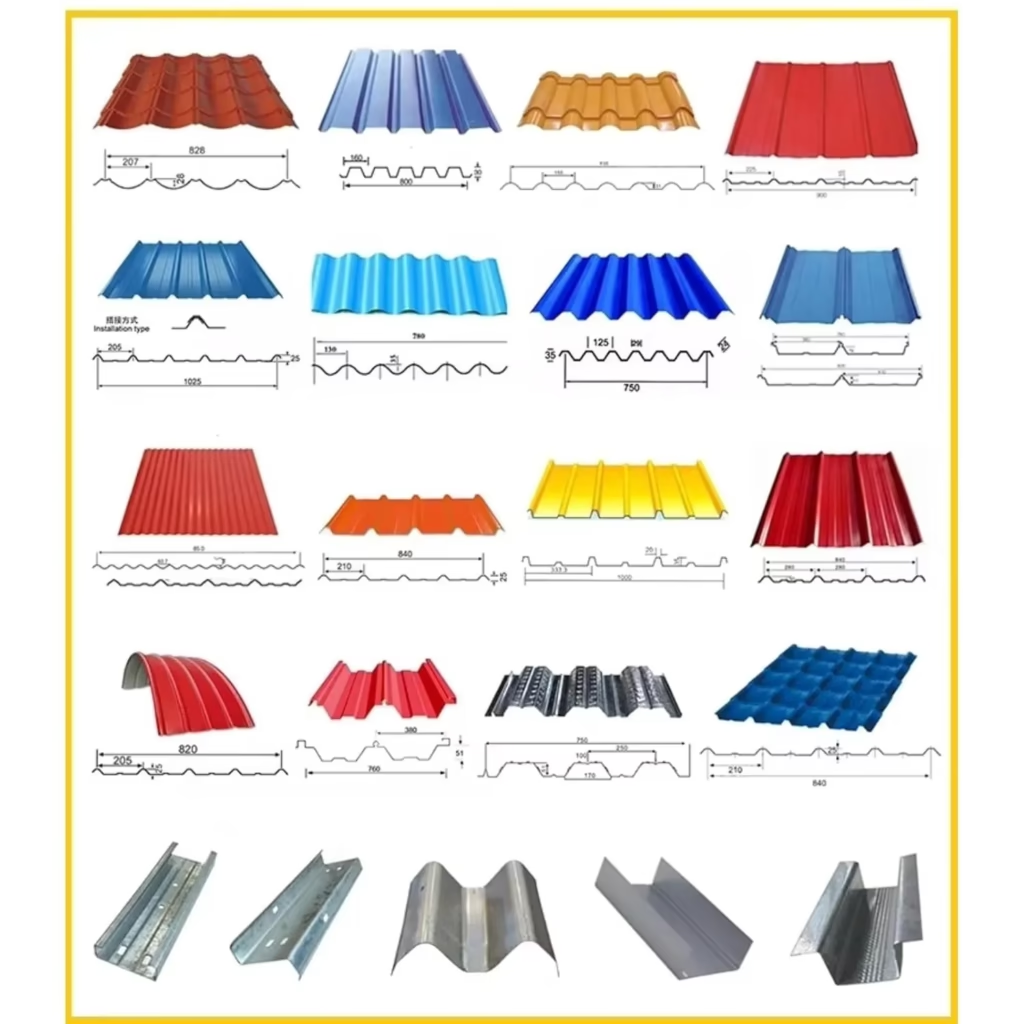
While the shingling hammer is a versatile tool, it’s important to understand how it compares to other roofing tools and when to use each:
- Roofing Nailer: Pneumatic nailers are faster for large jobs but lack the precision and versatility of a shingling hammer. They’re commonly used in large-scale projects in rapidly growing cities like Dubai or Shanghai.
- Pry Bar: While a shingling hammer has a claw for prying, a dedicated pry bar can provide more leverage for removing stubborn nails or shingles. This is particularly useful in older homes in cities like Boston or Philadelphia, where multiple layers of roofing may need to be removed.
- Utility Knife: For detailed cutting of shingles, a utility knife offers more precision than the axe blade of a shingling hammer. However, the hammer’s blade is more convenient for quick cuts.
- Roofing Shovel: Used for removing old shingles, a roofing shovel is more efficient for large areas than using the claw of a shingling hammer. This tool is essential for full roof replacements, common in areas prone to severe weather like Florida or the Gulf Coast.
- Chalk Line: While not a striking tool, a chalk line is used in conjunction with a shingling hammer to ensure straight lines for shingle placement. This is crucial for achieving the clean, professional look demanded in upscale neighborhoods from Beverly Hills to London’s Mayfair.
Understanding when to use each tool can greatly improve your roofing efficiency and quality, whether you’re working on a sleek modern home in Tokyo or a rustic cabin in the Swiss Alps.
Maintenance and Care for Your Shingling Hammer
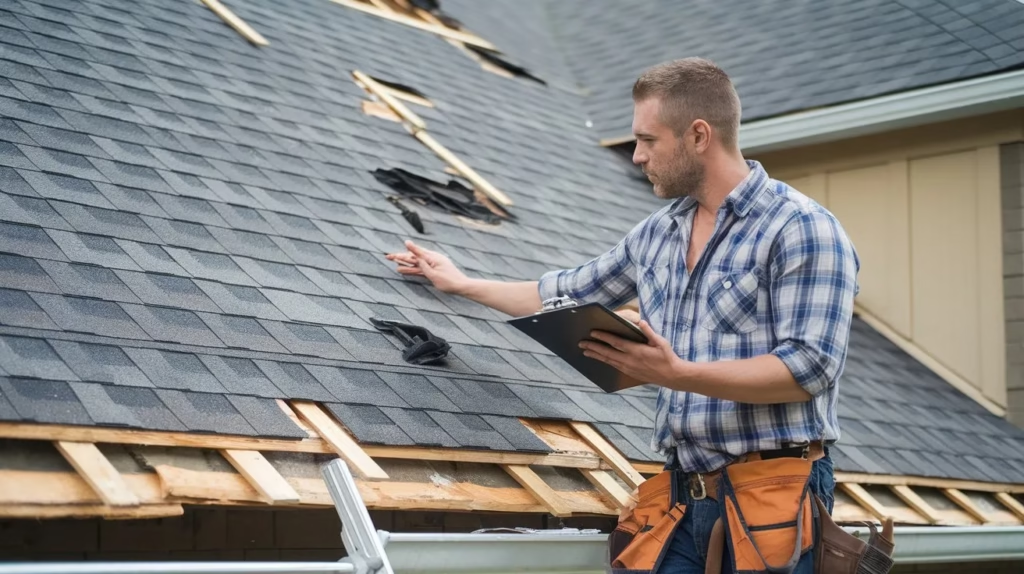
Proper maintenance of your shingling hammer is crucial for its longevity and performance. Here are some tips to keep your tool in top condition:
- Clean After Use: Remove any tar, dirt, or debris from the hammer head and handle after each use. This is particularly important in dusty environments like construction sites in rapidly developing cities such as Dubai or Las Vegas.
- Check for Damage: Regularly inspect the hammer for any signs of wear or damage, especially on the striking face and claw. Prompt repairs or replacement can prevent accidents and ensure consistent performance.
- Sharpen the Blade: If your shingling hammer has an axe blade, keep it sharp for efficient cutting. This is especially important when working with tough roofing materials common in areas with extreme weather, like the hurricane-prone regions of Florida or the Caribbean.
- Store Properly: Keep your shingling hammer in a dry place to prevent rust. Consider using a tool belt or pouch for easy access and protection when on the job.
- Maintain the Magnet: Clean the magnetic head regularly to ensure it retains its strength. A strong magnet is crucial when working on steep roofs, common in cities with varied architecture like San Francisco or Edinburgh.
- Handle Care: If your hammer has a wooden handle, occasionally treat it with linseed oil to prevent drying and cracking. This is particularly important in dry climates like Arizona or parts of Australia.
By properly maintaining your shingling hammer, you ensure its reliability whether you’re working on a high-rise in New York City or a countryside manor in the English Cotswolds.
Safety Considerations When Using a Shingling Hammer
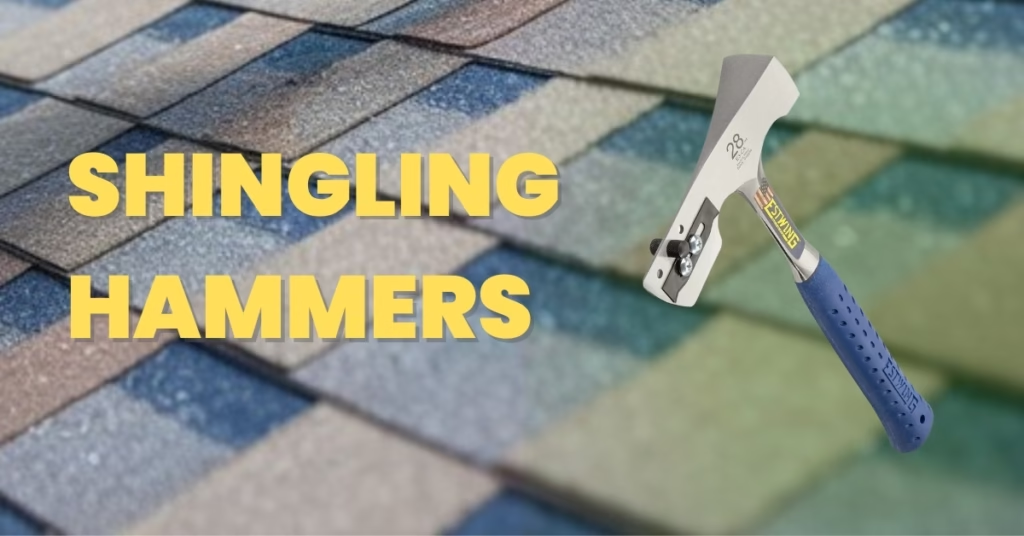
Safety should always be a top priority in roofing work. Here are some important safety considerations when using a shingling hammer:
- Proper PPE: Always wear appropriate Personal Protective Equipment, including safety glasses, work gloves, and a hard hat. This is non-negotiable whether you’re working on a small residential project in suburban London or a large commercial job in downtown Chicago.
- Secure Footing: Ensure you have a stable stance when using the hammer, especially on steep roofs. Use proper fall protection equipment, which is crucial in cities with multi-story buildings like New York or Hong Kong.
- Awareness of Surroundings: Be mindful of your coworkers and your environment. Accidental strikes can cause serious injury, particularly in busy construction sites common in rapidly growing cities like Dubai or Singapore.
- Proper Technique: Use the hammer as intended to avoid strain or injury. This includes maintaining a proper grip and using your whole arm, not just your wrist, when striking.
- Weather Considerations: Be extra cautious when working in wet or windy conditions. Cities like Seattle or London, known for their rainy weather, require additional safety measures during roofing work.
- Tool Inspection: Regularly check your shingling hammer for any defects or damage that could compromise safety. A damaged tool can be particularly dangerous when working at heights.
- Fatigue Management: Take regular breaks to prevent fatigue, which can lead to accidents. This is especially important in regions with extreme temperatures, like the scorching summers of Phoenix or the frigid winters of Moscow.
By prioritizing safety, you protect not only yourself but also your team and your clients, ensuring a positive reputation for your roofing services, whether you’re working in bustling metropolises like Tokyo or quaint towns in the Australian outback.
The Role of Shingling Hammers in Professional Roofing
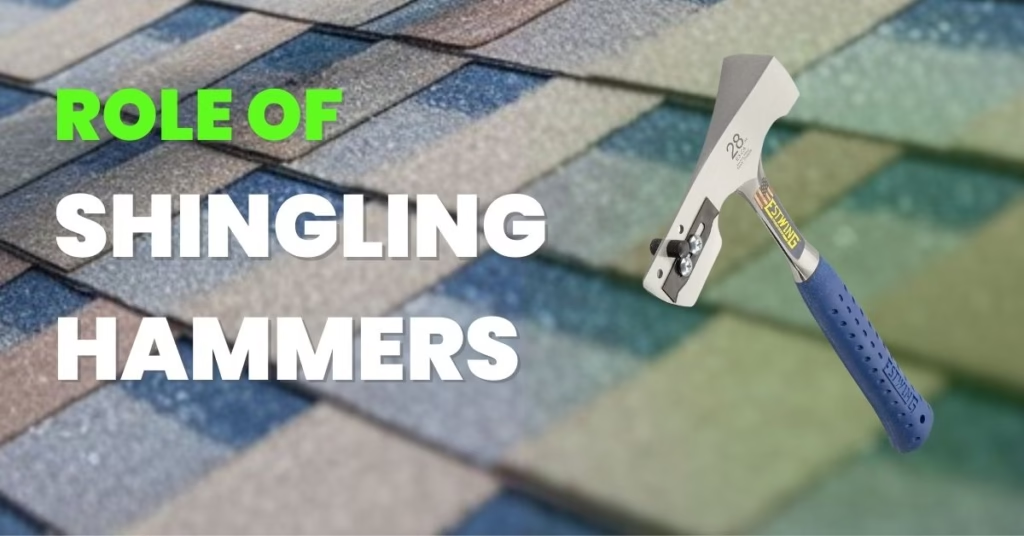
Professional roofers understand the crucial role that shingling hammers play in delivering high-quality roofing services. Here’s how these tools contribute to professional roofing work:
- Efficiency: The all-in-one design of shingling hammers allows roofers to work more efficiently, reducing project timelines. This is particularly valuable in cities with short construction seasons due to weather, like Toronto or Oslo.
- Precision: The built-in gauges and specialized features of shingling hammers enable precise shingle placement, crucial for both aesthetics and functionality. This precision is especially important in high-end residential areas like Beverly Hills or London’s Kensington, where homeowners expect perfection.
- Versatility: The ability to hammer, pry, and cut with a single tool makes shingling hammers invaluable for tackling various roofing tasks. This versatility is particularly useful in diverse architectural landscapes like those found in cities such as Barcelona or Prague.
- Quality Assurance: The design of shingling hammers helps prevent common roofing mistakes, such as overdriving nails or damaging shingles. This contributes to longer-lasting roofs, which is crucial in areas prone to severe weather, like Florida’s hurricane-prone coast or the snow-heavy regions of the Alps.
- Cost-Effectiveness: By reducing the need for multiple tools and improving work efficiency, shingling hammers help roofing companies manage costs effectively. This is particularly important in competitive markets like New York City or Sydney.
- Professionalism: The use of specialized tools like shingling hammers demonstrates a roofer’s commitment to their craft, instilling confidence in clients. This professional image is crucial in competitive markets like Dubai or Singapore, where reputation can make or break a roofing business.
- Adaptability: Shingling hammers are suitable for various roofing materials, from asphalt shingles to wood shakes. This adaptability is essential in cities with diverse architectural styles, such as San Francisco or Vienna.
Roofing Trends and Innovations
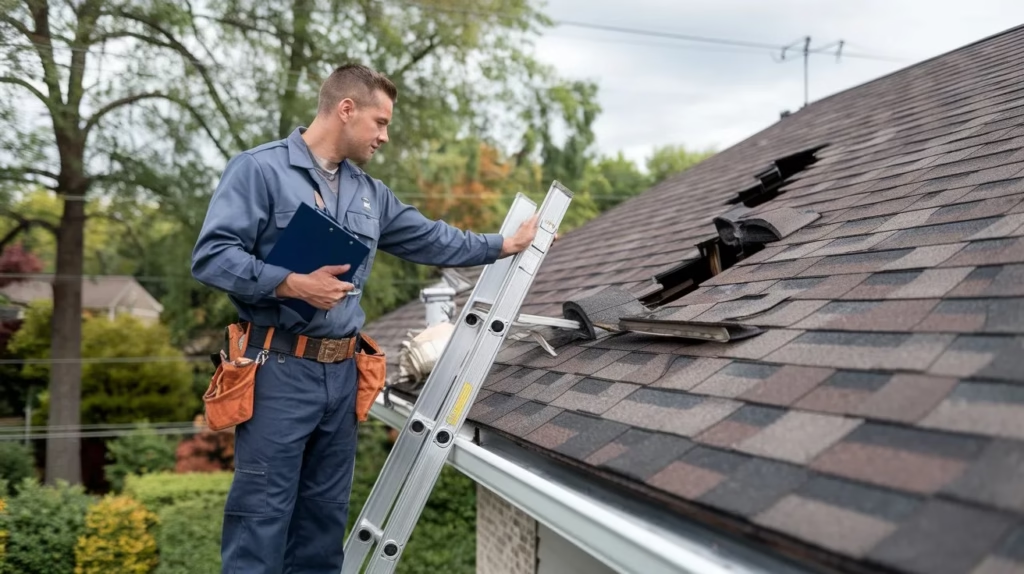
The roofing industry is constantly evolving, with new trends and innovations emerging regularly. While the shingling hammer remains a staple tool, it’s important to stay informed about the latest developments in the field:
- Solar Roofing: The integration of solar panels into roofing materials is gaining popularity, especially in environmentally conscious cities like Portland, Oregon, or Amsterdam. Specialized tools and techniques are being developed to install and maintain these innovative roofing systems.
- Green Roofs: Urban areas like Chicago and Toronto are seeing an increase in green roof installations, which require specific tools and expertise for proper implementation and maintenance.
- Cool Roofs: In hot climates like Phoenix or Madrid, cool roofing materials that reflect more sunlight are becoming increasingly popular. These materials often require specific installation techniques and tools.
- Synthetic Materials: Advanced synthetic roofing materials that mimic the look of traditional materials while offering improved durability are on the rise. Cities with strict historical preservation guidelines, like Charleston or Edinburgh, are particularly interested in these options.
- Smart Roofing Systems: The integration of sensors and smart technology into roofing systems is an emerging trend, particularly in tech-savvy cities like San Francisco or Seoul. These systems can detect leaks, monitor energy efficiency, and even adjust to weather conditions.
While these innovations may require specialized tools and techniques, the fundamental skills and tools of roofing, including the use of shingling hammers, remain crucial. Adapting traditional tools and techniques to work with these new materials and systems is a key challenge for modern roofers.
AdMize Homes: Your Trusted Roofing Partner in Islamabad
At AdMize Homes, we pride ourselves on staying at the forefront of roofing technology and techniques while maintaining a strong foundation in traditional roofing skills. Our team of expert roofers in Islamabad is well-versed in the use of shingling hammers and other specialized roofing tools, ensuring high-quality results for every project.
We understand that roofing is not just about protecting a building from the elements; it’s about enhancing its value, appearance, and energy efficiency. Whether you’re looking to repair a small leak or undertake a complete roof replacement, our skilled professionals are equipped with the knowledge, experience, and tools to get the job done right.
Our services include:
- Residential Roofing: From traditional tile roofs to modern flat roofs, we have the expertise to handle all types of residential roofing projects in Islamabad.
- Commercial Roofing: We offer comprehensive commercial roofing solutions, understanding the unique challenges and requirements of business properties.
- Roof Repairs and Maintenance: Our team is adept at identifying and fixing roof issues promptly, helping to extend the life of your roof.
- Emergency Roofing Services: We offer 24/7 emergency services to address urgent roofing issues, protecting your property from further damage.
- Roof Inspections: Regular roof inspections can catch potential issues early, saving you money and hassle in the long run.
- Sustainable Roofing Solutions: We offer eco-friendly roofing options, helping you reduce your carbon footprint and energy costs.
At AdMize Homes, we believe in educating our clients about roofing processes and tools. Understanding the importance of tools like the shingling hammer helps our clients appreciate the craftsmanship that goes into every roofing project. We’re always happy to discuss our techniques and tools, ensuring you feel confident and informed throughout the roofing process.
Conclusion
The shingling hammer is more than just a tool; it’s a symbol of the roofing trade’s precision, efficiency, and craftsmanship. Its unique design and versatility make it ideal for roofing work, whether you’re working on a modest home in Islamabad or a luxury villa in the south of France.
From its ability to hold nails for one-handed operation to its built-in gauge for precise shingle placement, the shingling hammer embodies the attention to detail that quality roofing demands. Its durability and adaptability to various roofing materials make it an indispensable tool for both professional roofers and DIY enthusiasts.
As we’ve explored in this comprehensive guide, the choice of tools can significantly impact the quality and efficiency of roofing work. Just as you would carefully consider which latch color for white drawer to choose in interior design, selecting the right shingling hammer and using it properly is crucial for achieving professional results in roofing.
At AdMize Homes, we’re committed to delivering exceptional roofing services in Islamabad, combining traditional skills with modern innovations. Our expertise with tools like the shingling hammer, coupled with our knowledge of the latest roofing trends and technologies, allows us to provide roofing solutions that are both durable and aesthetically pleasing.
Whether you’re a homeowner in need of roof repairs, a business owner looking to upgrade your commercial property’s roof, or a fellow professional interested in honing your roofing skills, we hope this guide has provided valuable insights into the world of shingling hammers and roofing techniques.
Remember, a well-maintained roof is crucial for protecting your property and enhancing its value. So, the next time you’re considering a roofing project, think about the humble shingling hammer and the skilled professionals who wield it. And if you’re in Islamabad, don’t hesitate to reach out to AdMize Homes for all your roofing needs. We’re here to ensure your roof stands the test of time, come rain or shine.

